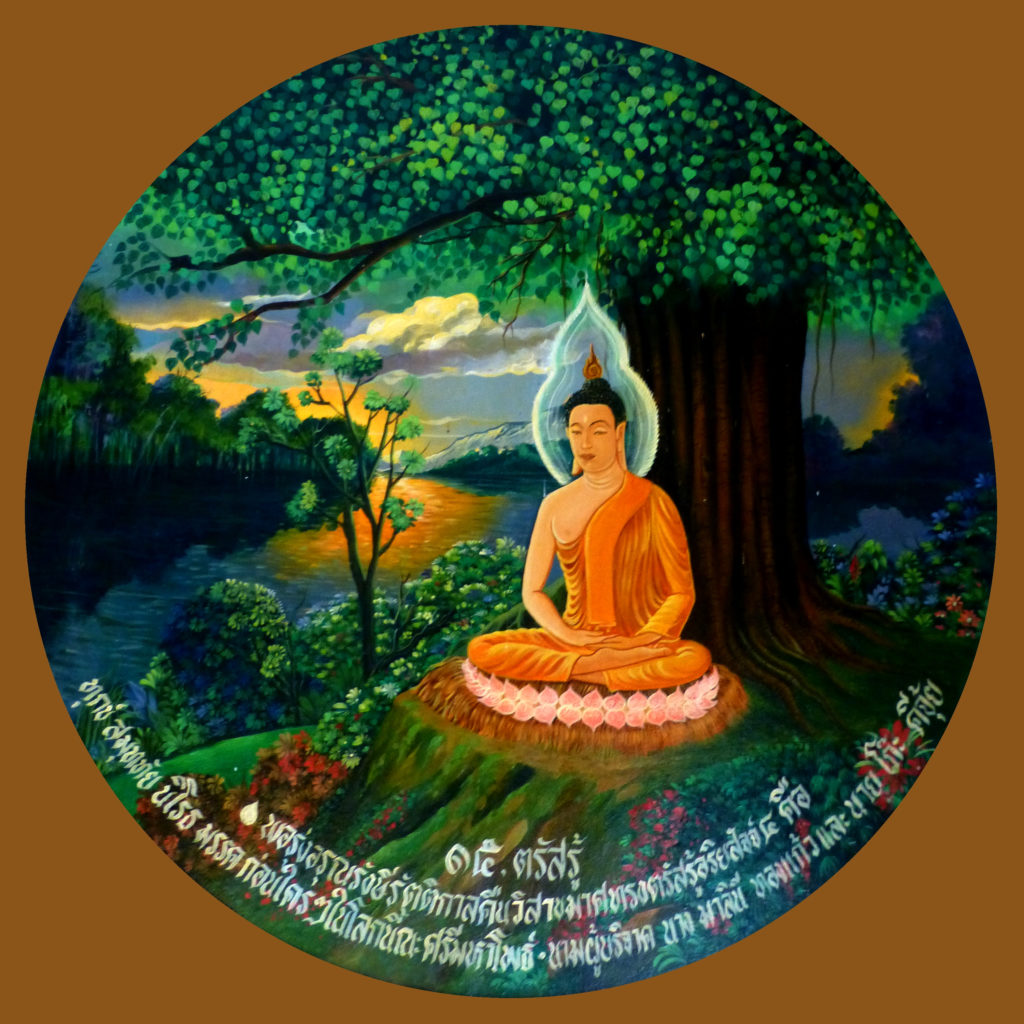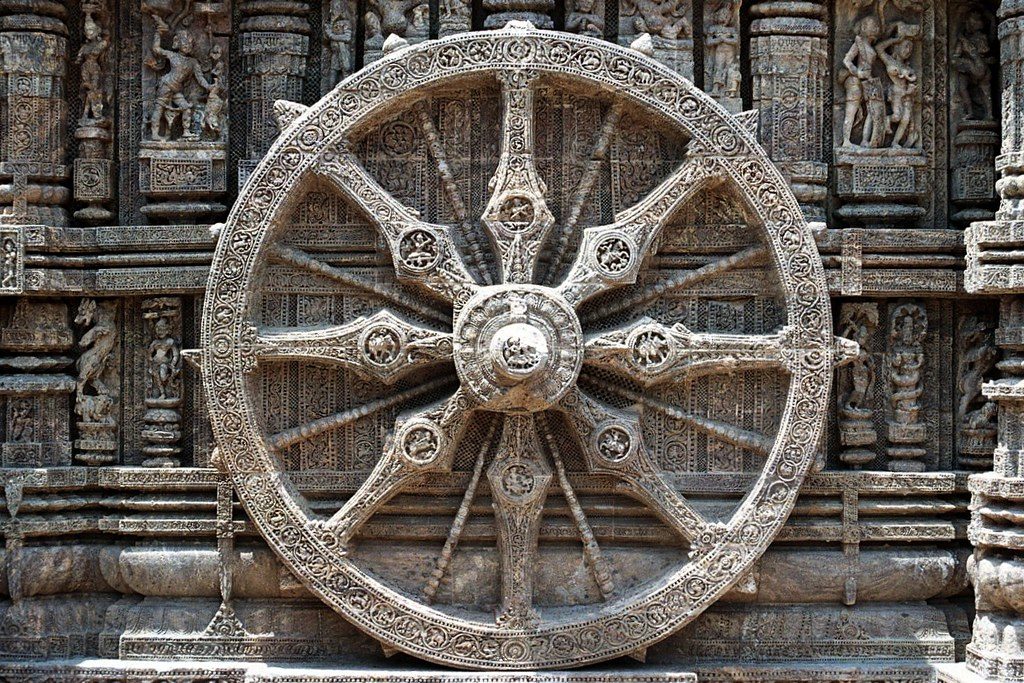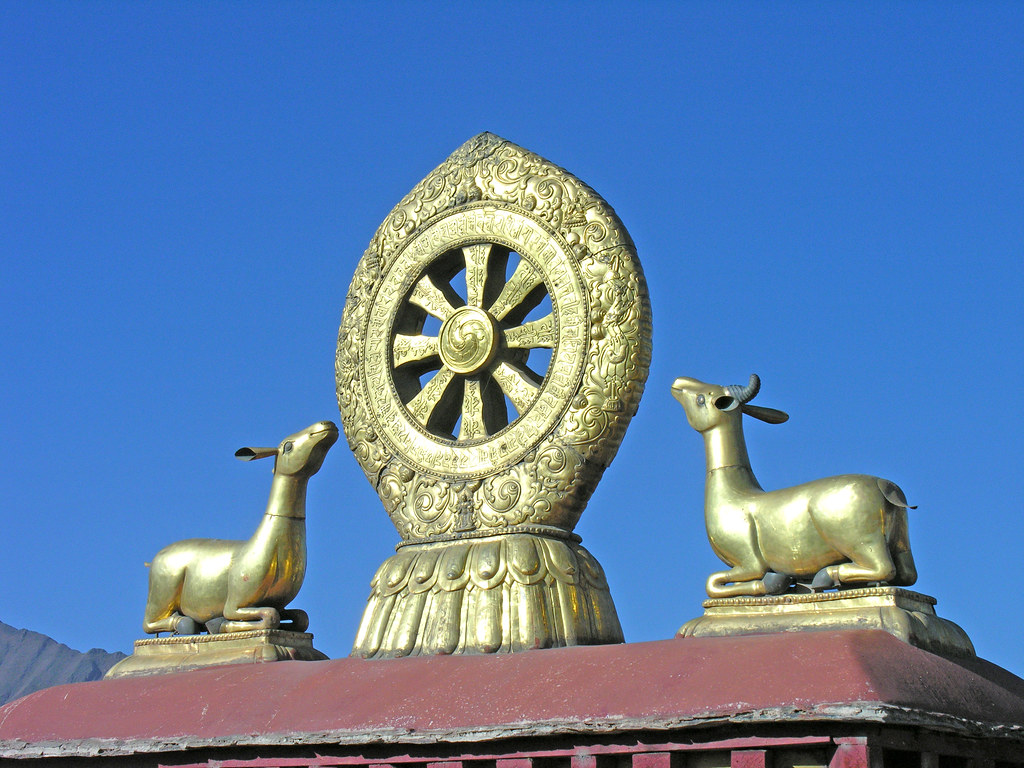Enlightenment: One Way or Another
Buddism or Buddha Dhamma has little to do with the cute and sexy hippie chic Dharma and her lawyer husband, Greg. A poor-man’s translation would be the “teachings of the enlightened one.” It is a very deep religion, open to anyone. If you’re into karma, this may be the religion for you. For followers truly believe what goes around does come around, and sooner or later a balance is reached.
Founded in the fifth century before the Christian era (a.k.a. 500 BC), by a rather chubby bald fellow named Siddhartha Gautama. Born in Lumbini-translated “the lovely”-high up in the mountains of Nepal-it was a park located between Kapilavatthu and Devadaha back in his day, today it’s more famous as a Buddist pilgrimage site.
Growing up near the Indian-Nepalese border, Prince Siddharhta awoke to find his inspiration at the age of 35. He presented himself as a role-model and told others to have faith in following his example of a person who escaped the pains and dangers of existence. Spending a good 45 years teaching his insights to anyone who’d listen, Prince Sidd passed on approximately at the ripe old age of 80. In the five centuries after his departure his teachings spread throughout the Indian subcontinent crossing the boundaries into neighboring countries. Over the next two thousand years his influence has spread into Asia and over the rest of the globe. Today Buddhism is a major religion, with members numbering somewhere between 230-500 million worldwide.
The scriptures state that the first Buddhist council was held following the “complete extinguishment” of the Buddha; a gathering to pass on orally the teachings of the prince. The main purpose was to insure no mistakes were being spoken.
The philosophy of Buddhism labels any person who has awakened from the “sleep of ignorance” without being preached to first and then goes out to teach it to others as a buddha. Such a life-altering state of enlightenment can only be achieved by discovering the true nature of reality through intense investigation, meditation, and spiritual cultivation. To have any hope at all of achieving this highly prized state one must abandon all lobha(greeed), dosa(hatred), moha(delusion), avijja(ignorance), tanha(craving), and atta(belief in self. Often it takes multiple life-times to reach the ultimate state called Bodhi.
Therefore Prince Sidd may have been the first, but he’s hardly the last in the line of spiritual instructors he inspired. Waking up, liberation, or Nirvana can only be achieved by opening up your mind to the true nature of reality.
The Four Noble Truths
As good a place to start at understanding Buddhism as any would be “The Four Noble Truths.” The noble Sidd taught us that in life there is Dukkha-sorrow and suffering that can be attributed to desire and greed. To alleviate such pain all one has to do is follow the “Noble Eightfold Path,” otherwise referred to as the “Four Noble Truths.”

Basically it boils down to the following:
1. There is suffering-Who in their right mind can deny that?
2. There is a cause of suffering-Typically human weaknesses such as cravings, selfishness, materialism, and greed.
3. The suffering can end-what all religions truly pray for, or should
4. The way to the cessation of suffering is by treading upon the “Noble Eightfold Path.”
It should be noted that Sidd first stated the “Four Noble Truths” not as a form of a religious sermon, but rather in the manner of remedy or prescription to a medical diagnosis- a style of oration that was popular at the time.
“The Noble Eightfold Path” is divided into three sections. Followers believe a person who fails to follow this righteous trail is akin to a child too busy playing with his toys to notice that he or she is surrounded by a house burning to the ground. Remind you any of Nero fiddling away his life while Rome burned?
Sila-the first fork in the path takes us to as morality. It is your duty to abstain from doing what is wrong. Let your conscience be your guide or else! Sila has three parts of its own:
1.Right Speech-say what you honestly mean in as non-hurtful, non-exaggerated a manner possible. The truth shall set you free.
2.Right Actions-do good and do no harm. I prefer to think of it as “do unto others as you would have them do unto you”-the universal “Golden Rule.”
3.Right Livelihood-possibly the most interesting-your chosen occupation does not harm yourself or anyone else directly or indirectly. Can we say: “Ut-Oh!” boys and girls?” This is likely the hardest part to live up to.
Samadhi-developing mastery over one’s own mind. Learn to control yourself people! Once again we fork off into three subparts:
1.Right Effort/Exercise-You should constantly strive to improve. How else can any life-form expect to evolve to a higher level? Wings don’t just sprout up on your back automatically you know.
2.Right Mind/Awareness-A clear mind allows you to see things clearly for what they truly are. This requires a guilt-free conscious as well as implying an abusive substance free body.
3.Right Concentration/Meditation-Know and be aware of who you are, the present reality within oneself. Don’t allow any craving or aversion lead you astray.
Prajna-is the wisdom which purifies the mind. This one unfolds into the last two parts of the eight:
1.Right Understanding- see things for what they are, not what you’d like them to be. Don’t kid yourself!
2.Right Thoughts-this is where you’re supposed to change your way of thinking to find a perfect train of thought. To become a better person you have to want to change!

The “Eightfold Path” can be interpreted in a variety of ways. Frequently taught as a progressive series of steps through which a true believer travels, the end of one part of the trail becoming the beginning of the next. Yet sometimes thought of a simultaneous experience, where the traveler treads on all paths at the same time. Sometimes the “Eightfold Path” is simplified into three forks, the pranja-wisdom, the sila-virtuous behavior, and the Samadhi-concentration.
Two more Buddhist pathways for you to consider:
The Middle Way or Path says you should seek moderation from sexual or self-indulgence and self-mortification and strive for more wisdom, morality, and mental cultivation. In other words act more as humans and less like animals.
Dependent Origination-a complex web of cause and effect covering past, present and future or in other words everything depends on everything else. This is where karma comes in. Everyone and everything is connected by a common thread in one way or another. We all influence our own universe which in turns influences us.
Acknowledging the Four Noble Truths and taking your first step onto the righteous path requires taking refuge in Buddhism’s “Three Jewels.” A pledge must make a vow considered to be the ultimate expression of compassion.
The Three Jewels sparkle as follows:
- The Buddha-someone who has achieved enlightenment and now teaches others to
- The Dharma-the teachings and law of nature based on a person’s behavior and its consequences
- The Sangha-this would be your congregation-either those who have attained at least the first stage of awakening or the community of Buddhist clergy.
Or at least that’s how I see it. The preceding was all the opinion of a novice (raised Roman Catholic) who by no means meant to offend anyone. He has enough trouble with the karma he’s been dealt as it is.





